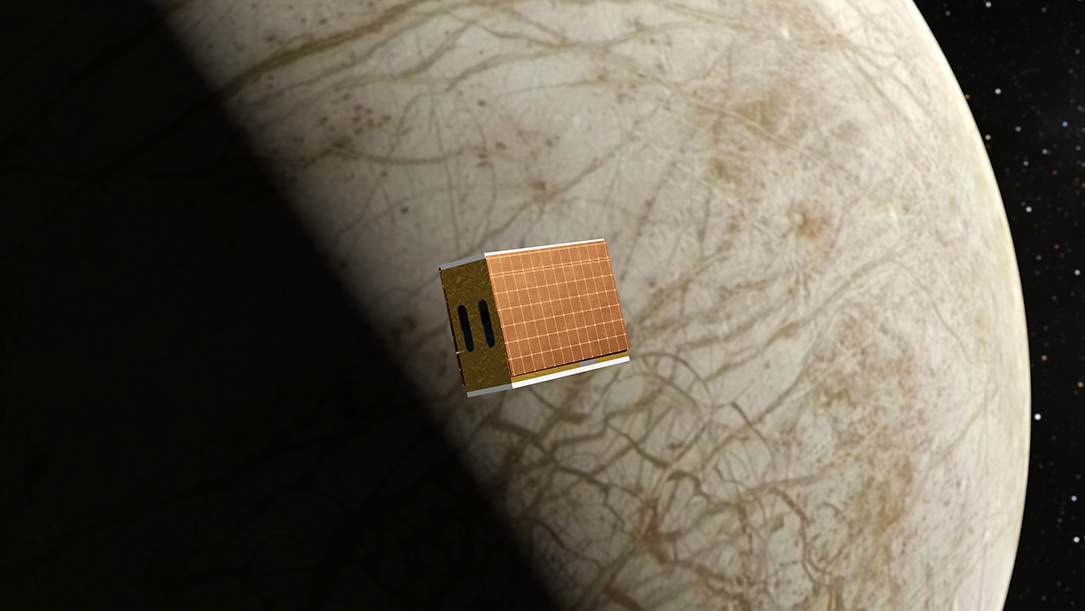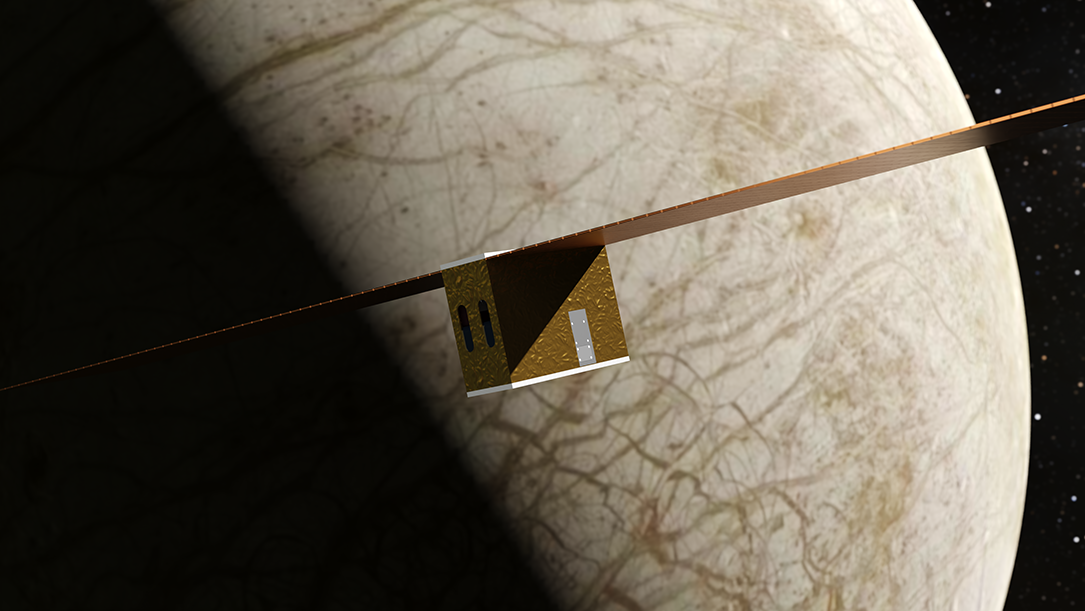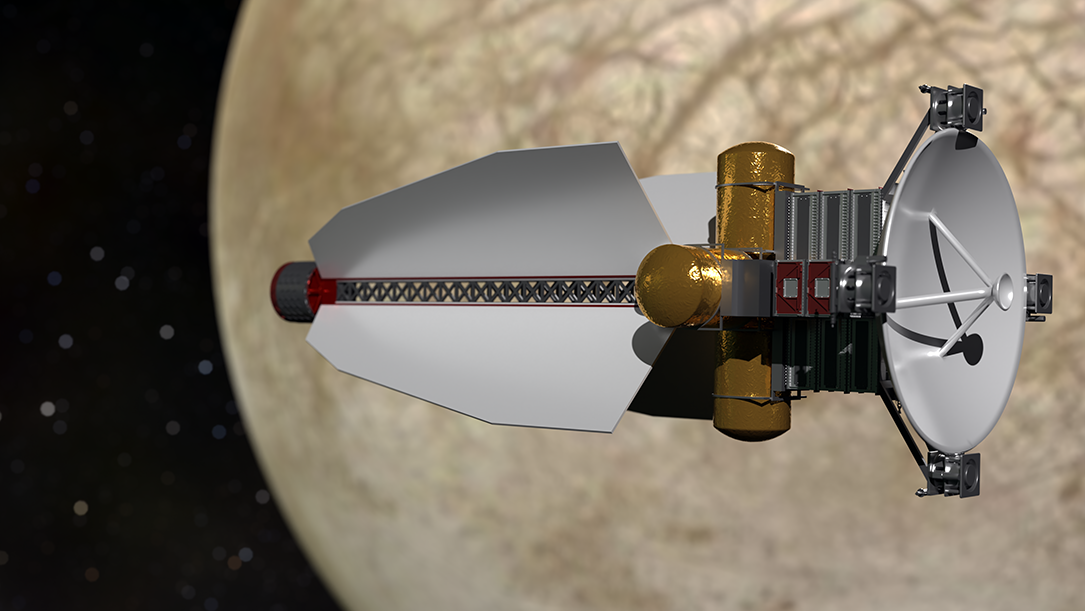Troy Howe
Howe Industries LLC
Nuclear electric propulsion (NEP) systems have the potential to provide a very effective transit mechanism to celestial bodies outside of the realm of solar power, yet the heavy power source and massive radiators required to justify a reactor core often push NEP spacecraft towards very large masses and major missions. If the total mass of an NEP system could be reduced to levels that were able to be launched on smaller vehicles, these devices could deliver scientific payloads to anywhere in the solar system. One major destination of recent importance is Europa, one of the moons of Jupiter, which may contain traces of extraterrestrial life deep beneath the surface of its icy crust. Occasionally, the subsurface water on Europa violently breaks through the icy crust and bursts into the space above, creating a large water plume. One proposed method of searching for evidence of life on Europa is to orbit the moon and scan these plumes for ejected organic material. By deploying a swarm of Cubesats, these plumes can be flown through and analyzed multiple times to find important scientific data. While the mass of the spacecraft required for this mission is often very large, the actual satellite payload is relatively small. The majority of the mass comes from fuel (in chemical rocket systems), or power generation (in solar or nuclear systems). By reducing the mass of the reactor in an NEP system, suddenly the option for inexpensive missions with small payloads opens up, including the Europa plume exploration missions.
The Swarm-Probe Enabling ATEG Reactor, or SPEAR, is a nuclear electric propulsion spacecraft that uses a new, lightweight reactor moderator and advanced thermoelectric generators (ATEGs) to greatly reduce overall core mass. This will subsequently require a reduction in operating temperatures and reduce the total power levels achievable by the core. However, the reduced mass will require reduced power for propulsion, resulting in a small, inexpensive nuclear electric spacecraft. This project will also demonstrate the operation of the ATEG conversion system through a series of lab bench tests by showing the improved characteristics of the new device.
The goal of this effort will be to design a spacecraft that will keep overall costs very low and allow for a number of deep space missions. This will be achieved by keeping the mass and volume low enough to be launched commercially by a Minotaur IV rocket, use low enriched uranium to keep licensing costs low and allow for private ownership, and utilize small satellite technology to keep technology costs low. Current estimates predict 10 Cubesats of 7 kg each could be delivered to Europa on a craft with a total wet mass of 1100 kg and length of 4 meters; well within the requirements of commercially available launch vehicles.
This video shows the SPEAR craft in transit around Europa where it deploys a swarm of CubeSats to search for signs of life in plumes of water. The CubeSats aim to fly through the water vapor and analyze the material to look for organic molecules. The spacecraft itself is powered by a fission reactor and advanced thermoelectric generators (ATEGs) developed as part of the NASA NIAC mission concept study.
Credits: Howe Industries



































